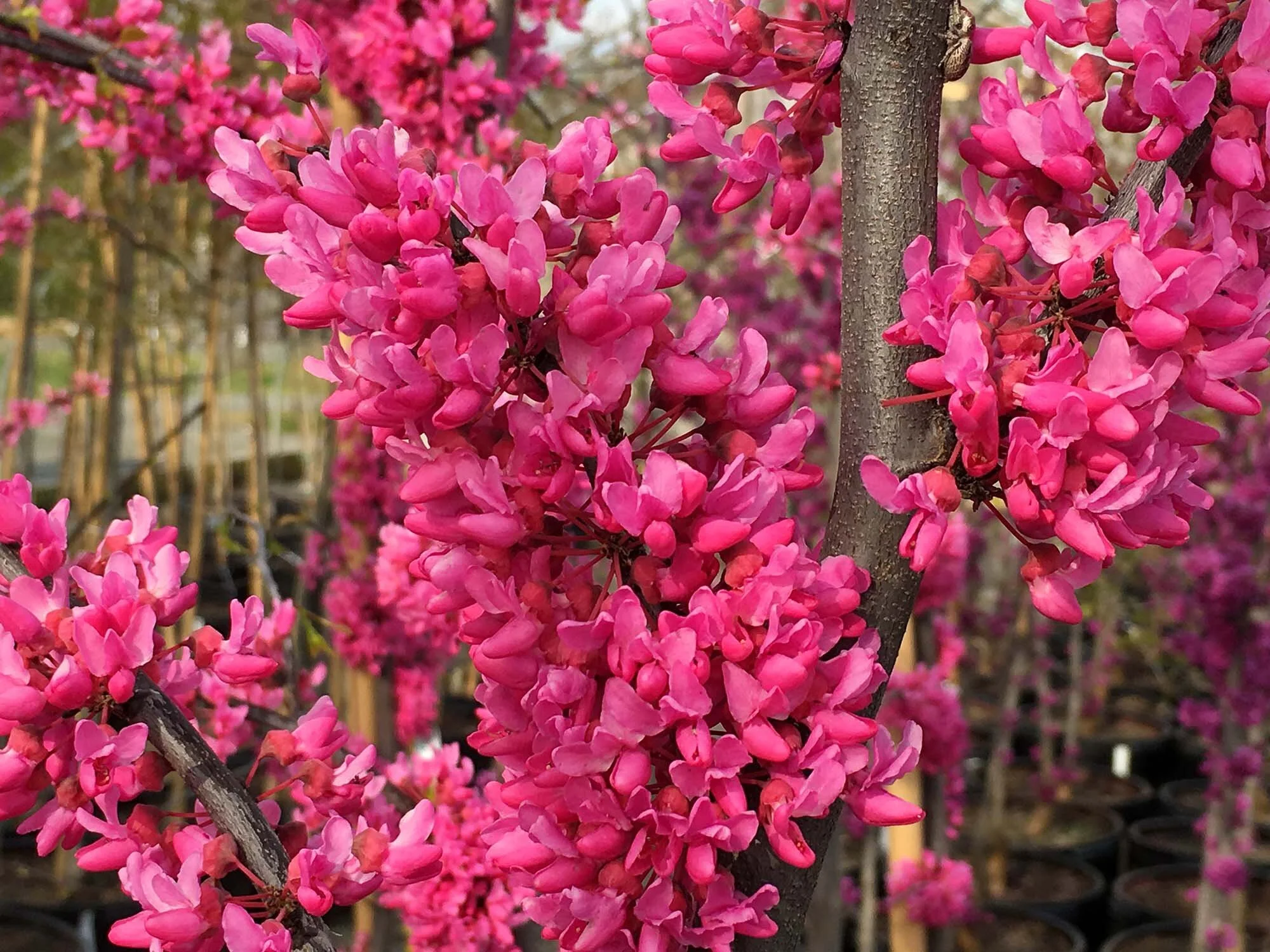Gold Medal Plants
In the Garden with Andrew
Andrew Bunting. Photo courtesy of the Pennsylvania Horticultural Society.
Each year, the Pennsylvania Horticultural Society’s Gold Medal Plant Program evaluates the best trees, shrubs, vines, and perennials for the mid-Atlantic region. For a plant to receive a gold medal, it must be easy to grow, be ornamentally interesting for much of the year, and be good for wildlife (perhaps by being a great pollinator or providing food for birds or mammals). It must also prove hardy when grown in our region (U.S. Department of Agriculture zones 5 through 7).
The Gold Medal Plant Program was conceived of and funded by a noted local nurseryman, Dr. J. Franklin Styer in the 1970s. He realized that it would help gardeners learn which plants would be superior in their landscapes. Since 1979 when the program started, it has recognized and promoted dozens of great plants for the home garden.
Cercis canadensis ‘Appalachian Red’. Photo: Lisa Strovinsky
Here’s how the program works: first, home gardeners, garden designers, horticulturists, landscape architects, and nursery owners nominate candidate plants. Then, a committee of expert horticulturists review the nominations and choose the year’s selections. When gardeners acquire a gold-medal plant, they can feel assured that the plant will exhibit the highest standard of beauty in the landscape, be resistant to pests and disease, and be relatively easy to cultivate.
The 2021 recipients include trees, shrubs and perennials. A tree I’m particularly excited to see on the list is Cercis canadensis ‘Appalachian Red’, one of the many cultivars of native redbud released in the last two decades. There are many appealing redbuds, but this is one of the very best. Before the leaves emerge in April, the branches are covered by bright rose-pink flowers. This tree grows to a height of 15 to 25 feet at maturity and is more upright than broad spreading. A great tree for a small garden, it will thrive best in full sun to part shade.
As for perennials, with so many great ones to choose from at the garden center and nursery, it is hard to pick the best. But for my money, Rudbeckia ‘American Gold Rush’ is a standout — an improvement over the many previous kinds of black-eyed Susan. Between July and September, this fairly compact plant produces an incredible abundance of golden-yellow flowers. The flower’s familiar black center becomes a seed and attracts many birds, including the American goldfinch. The plant is also fairly resistant to being eaten by deer.
Rudbeckia ‘American Gold Rush’. Photo: George Weigel
Another deer-resistant gold-medal recipient this year is one of the new hybrid, intersectional peonies, Paeonia ‘Bartzella’. This cross between a tree peony and a herbaceous peony has qualities of both. Its flowers resemble those of tree peonies, but, in the fall, the plant dies back to the ground the way a herbaceous peony does. In late spring, this cultivar produces 8-inch-tall, semi-double flowers on sturdy stems. The sulfur-yellow blossoms are fragrant, and the plant grows to a height of about 4 feet.
Among the summer-flowering shrubs that received the gold medal this year, one of my favorites is the panicle hydrangea, Hydrangea paniculata. Over the past 15 years, this species has experienced an incredible renaissance, with dozens of new cultivars having come on the market. The classic pee gee hydrangea, Hydrangea paniculata ‘Grandiflora’, is a fantastic large shrub (or small tree). However, it can grow as high as 25 feet tall, making it too big for many gardens. In contrast, Hydrangea paniculata Bobo is a diminutive selection that reaches only 3 feet tall, making it the perfect shrub for a small backyard or a city garden. It looks great when planted in masses. In mid-summer, it is covered with pure white, cone-like flowers that fade to pink in the fall. Because it flowers on the current season’s stems, it can be pruned back in late winter, which helps keep it even more compact.
Another small shrub or groundcover is a selection of the sweetbox, Sarcococca hookeriana ‘Fragrant Valley’. This boxwood relative is truly deer resistant. Growing only 18 inches tall and spreading by underground stems, it makes a great evergreen groundcover for shady parts of the garden. The tiny white flowers that emerge in late winter have an intense fragrance.
Platanus x acerifolia Exclamation! is an improved version of the classic London plane trees that line the Benjamin Franklin Parkway. This amazingly tough street tree has a very upright, pyramidal habit. Reaching 60 feet tall, it is perfect as a shade or street tree.
More information on these and other Gold Medal plants can be found at PHSonline.org.
Send your gardening questions to editor@swarthmorean.com. Put “Garden” in the subject line.
Andrew Bunting is vice president of public horticulture at the Pennsylvania Horticultural Society and vice president of the Swarthmore Horticultural Society.





